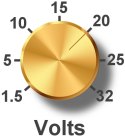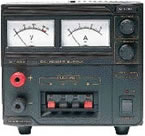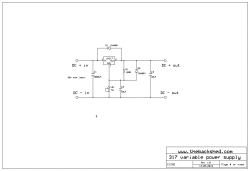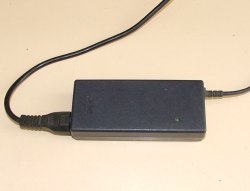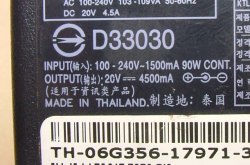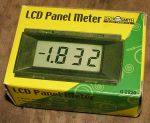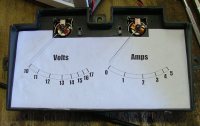 |
|
|
|
Site Navigation
Projects & Information
»General Information»Wind turbine Projects »The F&P Smartdrive »Electronic projects »Microcontroller projects »Miscellaneous Kits & Parts
»Basicly Natural Pty Ltd»PVC & Aluminium blades »Scale model farm windmills »Price Watch Discussion Forums
Handy Links
»Wind»Solar »Electric Vehicles »Electronics »Micro Controllers »General Interrest About TheBackShed Getting Started Privacy Policy |
Variable power supplies are used to supply power to a circuit we are repairing or developing. As the supplies output is adjustable, we can use it to replace batteries or plug packs. When developing or testing renewable energy circuits, a variable power supply can be used to simulate a battery that is charging or discharging, and we use this for setting up the controller and dump load. You can buy a variable power supply from a electronics outlet like Dick Smith, Jaycar or Radio Shack. Or you can build your own. Below we look at two variable power supply circuits. Both use components you should find at your local electronics parts outlet.
|
||||||||||||||
